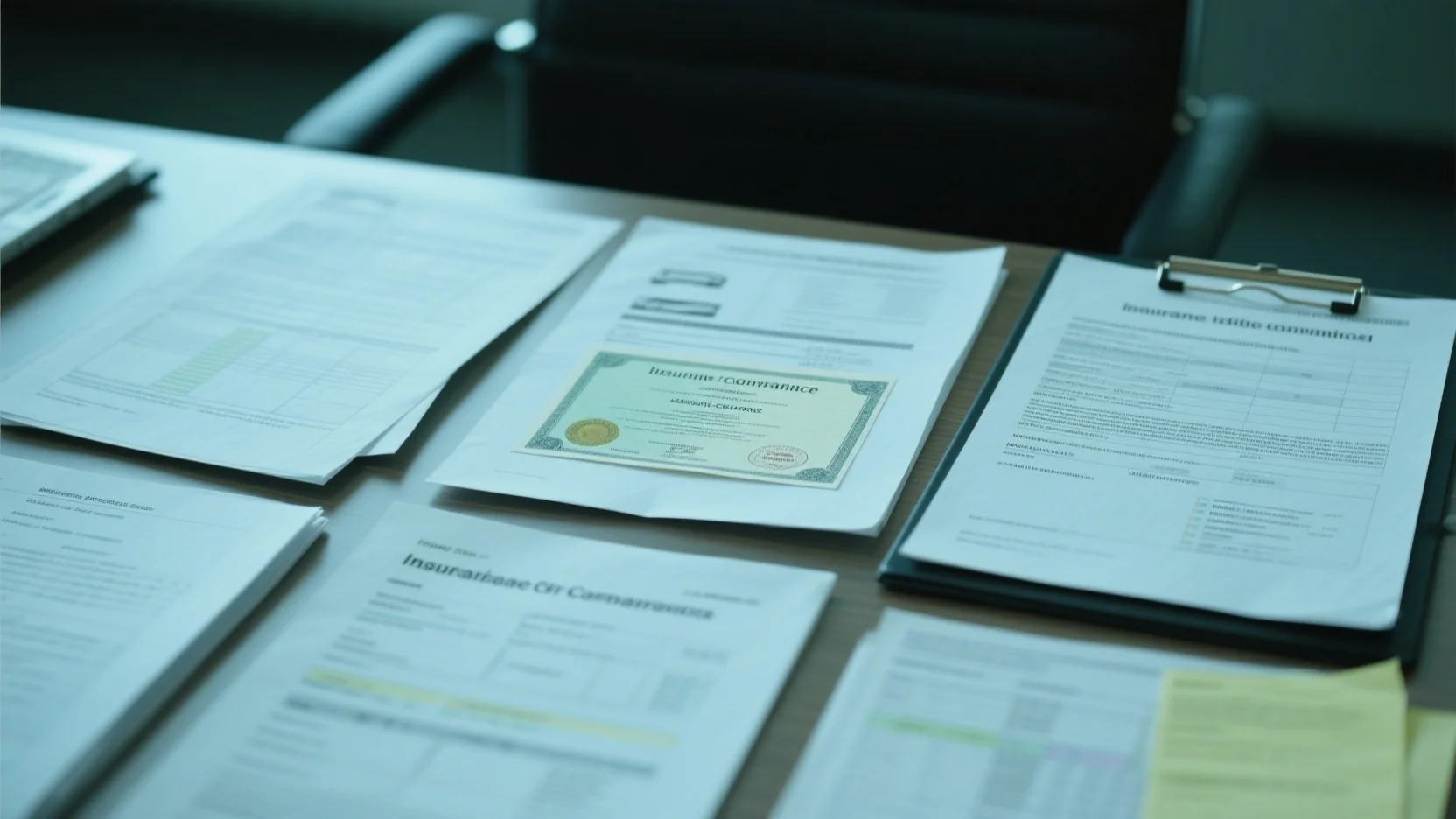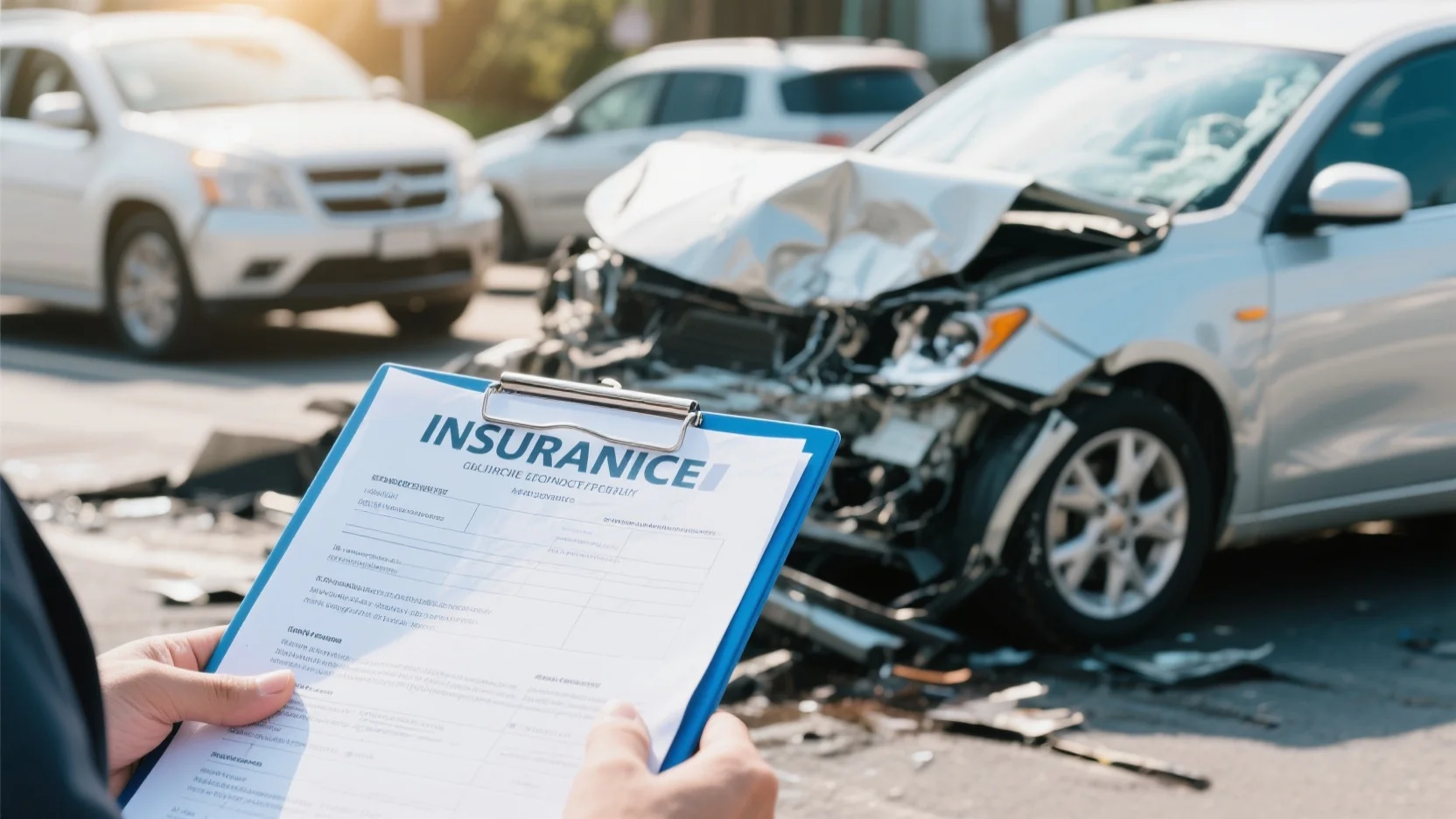
Everything You Need to Know About Filing a Car Insurance Claim with Another Driver

Image Source: unsplash
Filing a car insurance claim with another driver’s insurance doesn’t have to overwhelm you. By staying organized and proactive, you can simplify the process. Accurate documentation strengthens your case and ensures fair compensation. Communicate clearly with claims adjusters and understand how to file a car insurance claim step-by-step to protect your rights.
Key Takeaways
- Collect important details from the other driver after a crash. Get their name, phone number, insurance info, and car details. This helps with your claim.
- Always report the accident to the police. The police report gives a fair account of what happened. It makes your claim stronger with the insurance company.
- Tell your insurance company as soon as possible. Reporting early helps you get benefits and keeps them updated, even if it’s not your fault.
What to Do Immediately After an Accident
Gather Essential Information from the Other Driver
After ensuring everyone’s safety, collect key details from the other driver. This information is crucial for filing your claim and protecting your rights. Make sure to gather:
- Contact details : Full name, phone number, and address.
- Insurance information : Company name, policy number, and contact details.
- Driver’s license details : License number and issuing state.
- Vehicle information : Make, model, year, and license plate number.
Having this information ensures a smoother claims process and helps avoid disputes later.
Contact the Police and File an Official Report
Always involve the police, even for minor accidents. An official report provides an unbiased account of the incident, which strengthens your claim. Some states require you to report accidents based on specific conditions:
| State | Reporting Requirement | Deadline |
|---|---|---|
| California | Report if damage exceeds $1,000 or there are injuries. | 10 days |
| Florida | Report if damage exceeds $500 or there are injuries. | As soon as possible |
| Texas | Report if damage exceeds $1,000 or there are injuries. | Immediately |
Check your state’s requirements to ensure compliance.
Tip : Request a copy of the police report for your records. It’s a valuable piece of evidence when dealing with insurance companies.
Take Photos and Notes to Document the Scene
Use your phone to capture every detail of the accident. Focus on:
- Vehicle damage : Photograph all vehicles from multiple angles.
- License plates : Ensure clear images of all involved cars.
- Skid marks and debris : Document road evidence like tire tracks.
- Traffic signs and signals : Capture nearby signs and lights.
- Injuries : Take pictures of any visible injuries.
Detailed photos and notes provide undeniable proof of what happened.
Notify Your Insurance Company About the Accident
Contact your insurer immediately. Prompt notification ensures you comply with policy requirements and protects you from potential liability. Early reporting also helps you access benefits like towing or rental car coverage.
Note : Even if the other driver is at fault, notifying your insurer keeps them informed and ready to assist if needed.
Understanding Third-Party Insurance Claims
What Is a Third-Party Insurance Claim?
A third-party insurance claim allows you to seek compensation from the at-fault driver’s insurance provider. This type of claim applies when another driver causes an accident that results in damage to your property or injuries to you. Unlike a first-party claim, where you file with your own insurance company, a third-party claim holds the responsible party accountable for their actions. By filing this claim, you ensure that the at-fault driver’s insurance covers your losses, reducing your financial burden. Understanding this distinction empowers you to take the right steps after an accident.
How Fault Impacts the Claim Process
Fault plays a critical role in determining the outcome of your claim. Insurance companies investigate the accident to establish who caused it. If the other driver is found at fault, their insurance will cover your damages. However, in states with comparative negligence laws, your compensation may be reduced if you share some responsibility for the accident. For example, if you are 20% at fault, you may only receive 80% of the total claim amount. Knowing how fault affects your claim helps you set realistic expectations and prepare for potential challenges.
Coverage Provided by the Other Driver’s Insurance
The other driver’s insurance typically offers several types of coverage in a third-party claim. These include:
| Coverage Type | Description |
|---|---|
| Bodily Injury | Medical expenses for injuries suffered by the third party, such as hospital bills and rehabilitation costs. |
| Property Damage | Repair or replacement costs for the third party’s damaged property, such as their vehicle. |
| Pain and Suffering | Compensation for non-economic damages like pain and suffering in cases of serious injury. |
| Lost Wages | Reimbursement for income lost by the third party due to their injuries. |
| Rental Car Costs | Coverage for rental car expenses while the third party’s vehicle is being repaired. |
Understanding these coverage types ensures you know what to expect when filing your claim. This knowledge helps you advocate for fair compensation and avoid settling for less than you deserve.
How to File a Car Insurance Claim Step-by-Step

Image Source: pexels
Contact the Other Driver’s Insurance Company
The first step in filing a car insurance claim step-by-step is reaching out to the other driver’s insurance company. To ensure a smooth process:
- Notify your own insurance company about the accident.
- Gather all necessary details, including the other driver’s insurance information, photos of the accident scene, and witness contact details.
- File a police report if injuries or significant property damage occurred.
- Contact the other driver’s insurer and provide all relevant information to initiate the claim.
Tip : Stay calm and professional during this conversation. Avoid admitting fault or making speculative statements about the accident.
Submit Required Documentation and Evidence
Submitting accurate documentation strengthens your claim. Commonly required documents include:
- Proof of claim form.
- Police report (if applicable).
- Photos of the accident scene and vehicle damage.
- Medical records if injuries occurred.
Organize these materials before submission to avoid delays. Missing or incomplete documents can slow down the process.
Work with the Claims Adjuster Assigned to Your Case
Once your claim is filed, the insurance company will assign a claims adjuster. Their role is to investigate the accident, review damages, and determine the settlement amount. They may inspect your vehicle, interview witnesses, and analyze medical records.
Note : Be prepared to negotiate. Understand the value of your claim and provide evidence to support your position. This ensures you receive fair compensation.
Monitor the Progress of Your Claim
Stay proactive by regularly checking the status of your claim. Follow up with the insurance company and respond promptly to any requests for additional information. Keeping communication open helps resolve your claim faster and avoids unnecessary delays.
Filing a car insurance claim step-by-step doesn’t have to be overwhelming. By staying organized and informed, you can navigate the process confidently.
Handling Challenges During the Claims Process
Steps to Take If Your Claim Is Denied
A denied claim can feel frustrating, but you have options to turn things around. Start by reviewing the denial letter carefully. It will explain why your claim was rejected. Common reasons include:
- Avoidable accidents: The insurer may argue the accident was preventable.
- Failure to meet policy terms : Missing requirements outlined in your policy can lead to rejection.
- Missed deadlines : Filing your claim too late often results in denial.
- Disputed liability: Conflicting accounts of the accident can complicate your case.
- Coverage denials : Lapsed policies or non-covered events are frequent issues.
Once you understand the reason, gather additional evidence to support your case. This could include witness statements, repair estimates, or medical records. Then, appeal the decision with the insurer. Persistence and thorough documentation can often reverse a denial.
Addressing Insufficient Coverage from the Other Driver
If the other driver’s insurance doesn’t fully cover your damages, you still have options. First, determine whether you live in a negligence or no-fault state. In no-fault states, you can claim compensation from your own insurer. In negligence states, you may need to file a claim against the at-fault driver or even sue them. If you have underinsured motorist coverage, use it to bridge the gap. Proving the other driver caused the accident strengthens your case and ensures you receive fair compensation.
When to Involve Your Own Insurance Provider
Sometimes, relying on the other driver’s insurance isn’t enough. If delays, disputes, or insufficient coverage arise, contact your own insurer. They can help you navigate the process and may provide benefits like collision coverage or underinsured motorist protection. Acting quickly ensures you don’t miss out on the support your policy offers. Your insurer can also step in to negotiate with the other party’s provider, saving you time and stress.
Seeking Legal Assistance for Complex Cases
When the claims process becomes overwhelming, hiring a lawyer can make a significant difference. Legal professionals handle communication with insurers, compile necessary documents, and represent you in negotiations. They specialize in maximizing compensation by building strong cases and advocating for your rights. If your claim involves disputed liability, severe injuries, or denied coverage, a lawyer ensures you aren’t taken advantage of. Their expertise allows you to focus on recovery while they fight for the settlement you deserve.
Tip : Don’t wait too long to seek legal help. Acting early can prevent costly mistakes and strengthen your case.
Legal and Time Considerations
Understanding the Statute of Limitations for Claims
Every state has a statute of limitations that sets a deadline for filing car insurance claims. Missing this deadline can prevent you from recovering compensation. Knowing your state’s timeline is crucial to protecting your rights.
Here’s a quick reference for some states:
| State | Statute of Limitations on Car Insurance Claims |
|---|---|
| California | 2 years |
| Florida | 4 years |
| Illinois | 2 years personal injury, 5 years property damage |
| Louisiana | 1 year |
| Maine | 6 years |
| Texas | 2 years |
| Virginia | 2 years personal injury, 5 years property damage |
Tip : Act quickly after an accident to avoid missing these deadlines. Contacting the insurance company early ensures you stay within the legal timeframe.
When and Why to Seek Legal Help
Involving a legal expert early in the claims process can make a significant difference. Attorneys specializing in insurance law provide several benefits:
- They understand complex policies and ensure claims are filed correctly.
- They streamline the process, reducing delays and administrative burdens.
- They maximize your claim’s value by negotiating with insurers.
Additionally, legal professionals handle communication with insurance companies and compile all necessary documentation. Their expertise alleviates stress and ensures you receive fair compensation. If your claim involves disputed liability or severe injuries, hiring a lawyer strengthens your case and protects your rights.
Importance of Acting Quickly After an Accident
Time is your greatest asset after an accident. Acting promptly allows you to gather accurate evidence, file claims within deadlines, and avoid complications. Delays can weaken your case, especially if witnesses forget details or evidence deteriorates.
Reminder : Contact the insurance company, document the scene, and consult a lawyer if needed. Quick action ensures you stay ahead of potential challenges and secures the compensation you deserve.
Filing a car insurance claim with another driver’s insurance becomes easier when you follow the right steps. Actions like documenting the accident scene, notifying your insurer promptly, and cooperating during the investigation are key to success. Stay proactive and organized. If challenges arise, seek legal advice or involve your insurer to protect your rights.
FAQ
What should you do if the other driver refuses to share their insurance information?
Stay calm and document the situation. Take photos, gather witness statements, and file a police report. Your insurer can help track down their insurance details.
Can you file a claim if the other driver doesn’t have insurance?
Yes, if you have uninsured motorist coverage. This policy protects you by covering damages when the at-fault driver lacks insurance.
How long does it take to resolve a car insurance claim?
The timeline varies. Simple claims may resolve in weeks, while complex cases involving disputes or injuries can take months. Stay proactive to speed up the process.
